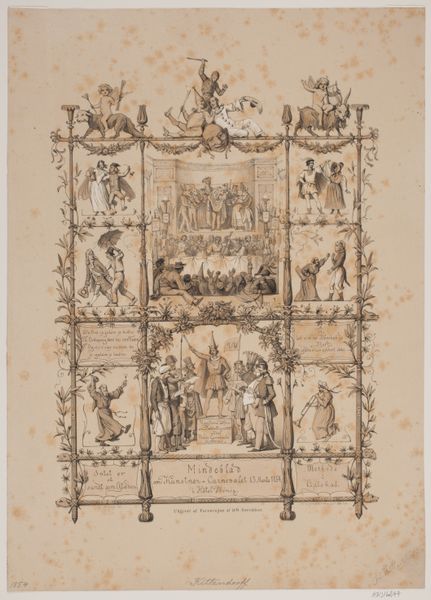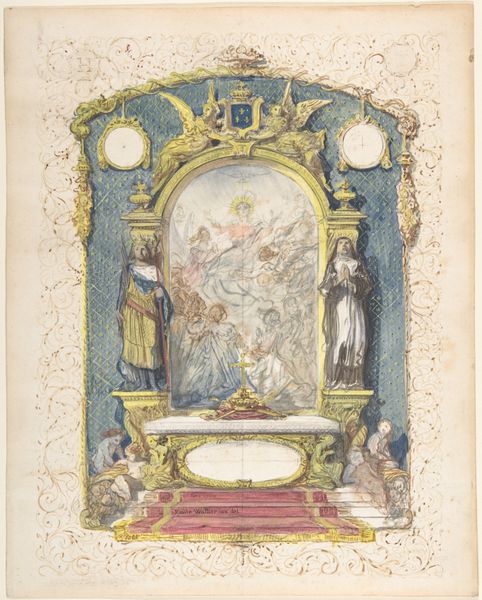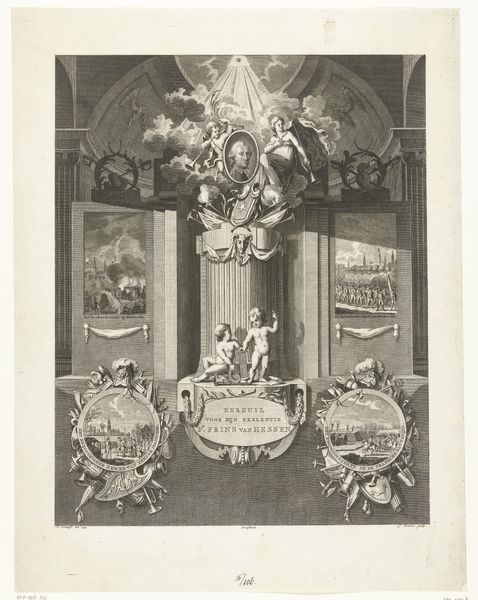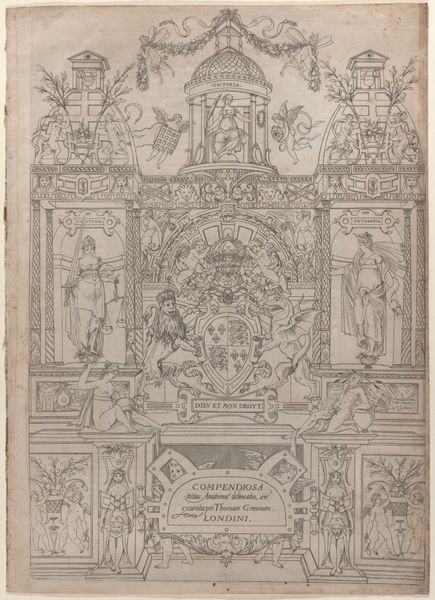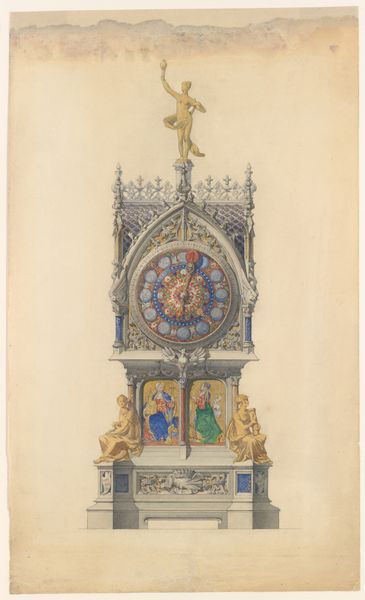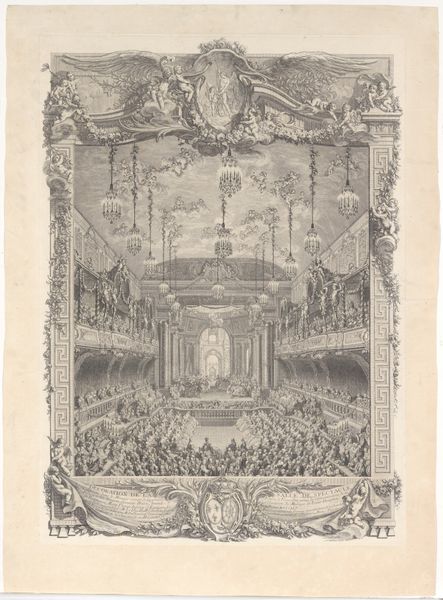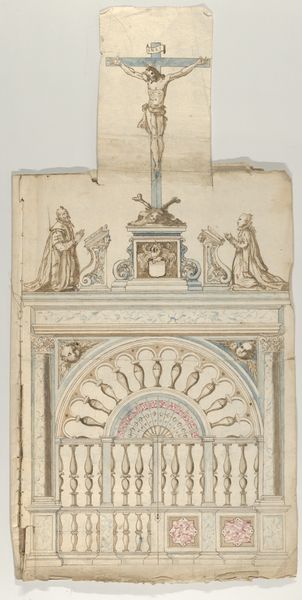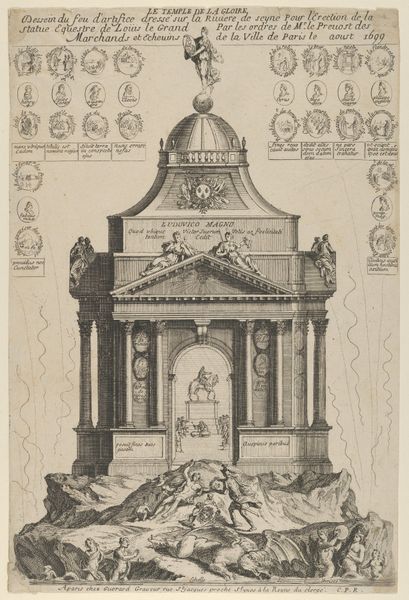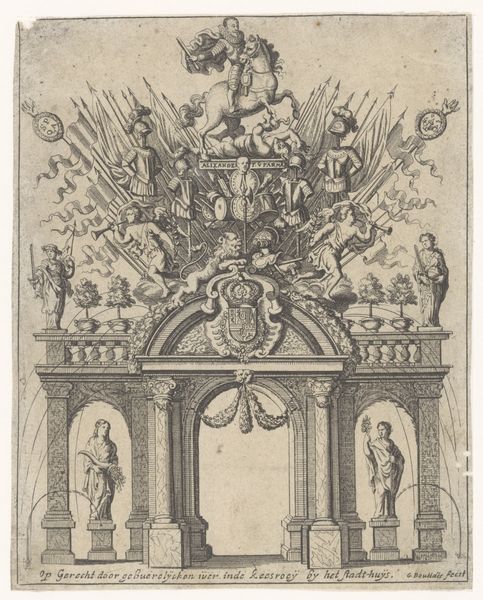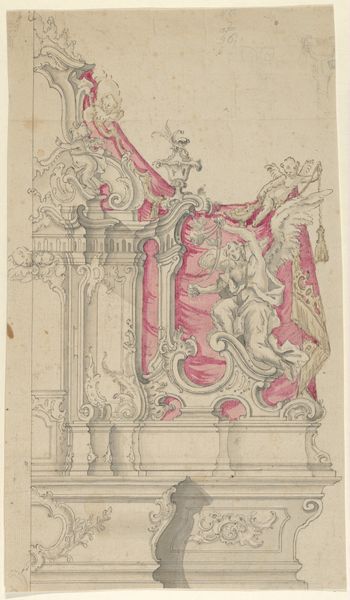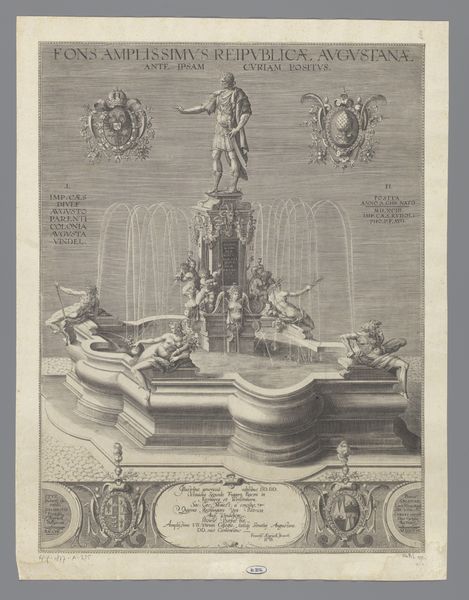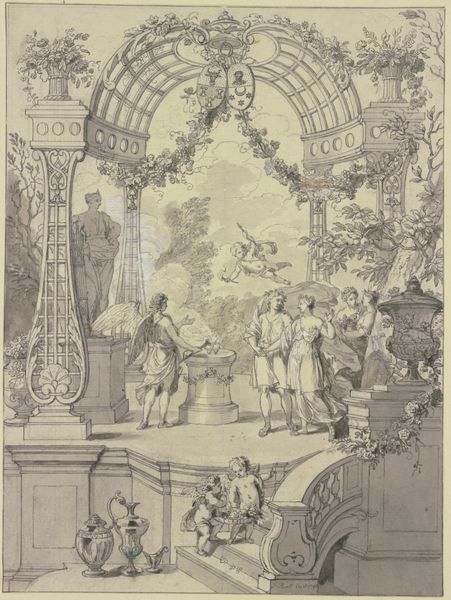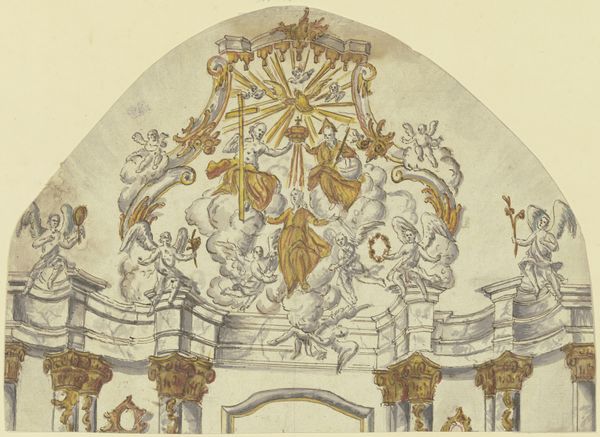
print, engraving, architecture
#
muted colour palette
#
baroque
# print
#
mural art
#
traditional architecture
#
history-painting
#
decorative-art
#
engraving
#
decorative art
#
architecture
Dimensions: height 690 mm, width 477 mm
Copyright: Rijks Museum: Open Domain
Curator: Well, the overall mood it evokes is kind of a heavenly sigh. Or perhaps a dramatic whisper from another realm? It’s certainly layered. Editor: Indeed. What we're observing is a print, dating between 1692 and 1717. The title? "Cathedra Petri". Its creator, Jacques Blondeau. Now, let's delve into its significance. Blondeau's print serves as a visual document, capturing the Baroque splendor of the altar and throne of St. Peter. Curator: Baroque, absolutely. It’s all swirls and triumphant blasts of gold light—which is captured rather softly for Baroque I might add, though the symmetry anchors it. There’s an energy trying to break free but reined in. That feels very of the time, right? A world on the cusp of radical change held together by divine will. Editor: Precisely. Notice how the artist employs architecture, figures, and radiant light to convey power. The image wasn't simply about aesthetics, but served a public role—projecting the might and unwavering faith of the Church, a socio-political strategy deeply woven into Baroque artistic expression. The chair of Saint Peter elevated and bathed in divine light becomes a symbol of enduring papal authority. Curator: You know, the angels look like they are bursting out from some celestial theater production. They're almost comically adorable and kind of goofy in their earnest devotion. Were they intentionally meant to be endearing like that, or did Jacques miss a mark of perfect seriousness? It gives it a rather humorous aspect, an accidental irreverence almost. Editor: Interesting point. The engraving process allows for mass distribution; in theory this image has been broadcasted and consumed publicly to those outside the grand interior. Such readily distributed visual statements can cultivate social order by communicating power while shaping devotion—and potentially shaping perceptions in complex ways, like perhaps introducing relatable humor, too. The figures and their interaction with light shape a complex dialogue between heavenly ideals and human engagement. Curator: Right, right. It’s not *just* pretty pictures. Though, admittedly, the more I look at it, the more I am charmed by those cherubic, somewhat awkward angels floating above all that grandiosity. It's an imperfect heaven… which makes it feel much more human and engaging! Editor: A fitting sentiment for contemplating not only artistic representation but also complex power dynamics.
Comments
No comments
Be the first to comment and join the conversation on the ultimate creative platform.
